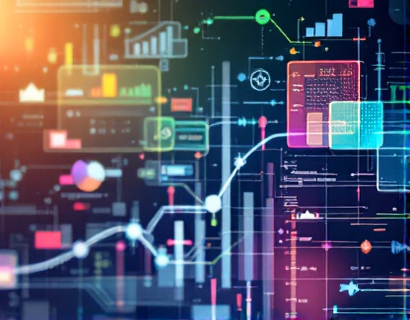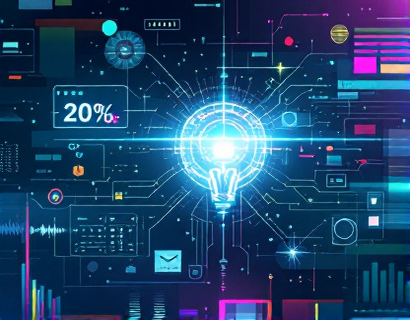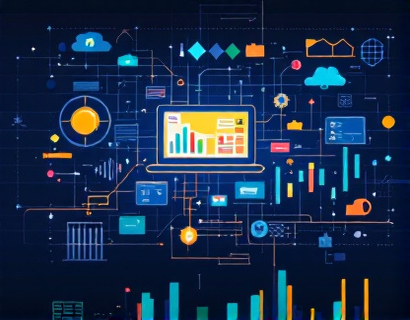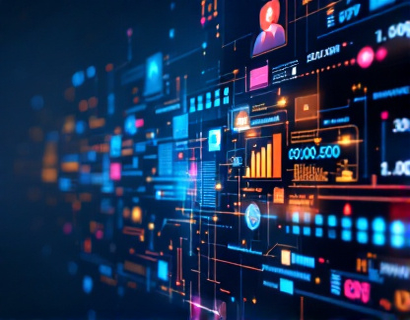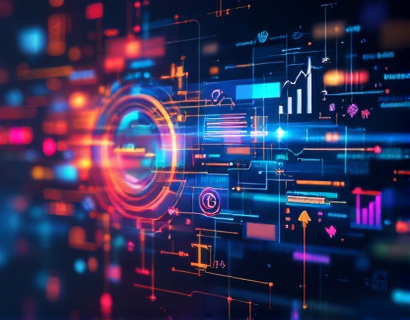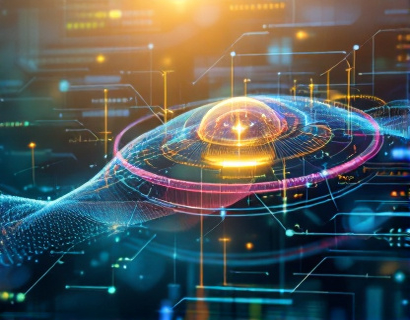Transforming Productivity with AI and Crypto: A New Era of Digital Solutions
The intersection of artificial intelligence (AI) and cryptocurrency is giving rise to innovative digital solutions that are revolutionizing the way tech innovators and early adopters approach productivity. This synergy is not just about combining two cutting-edge technologies; it's about creating a new paradigm where workflow and task management are optimized to unprecedented levels. In this article, we delve into the advanced solutions that leverage AI and cryptocurrency to transform the digital landscape, offering a glimpse into the future of seamless task optimization and workflow enhancement.
The integration of AI and cryptocurrency is fundamentally changing the way we interact with digital tools. AI brings intelligence, automation, and efficiency to the table, while cryptocurrency provides a decentralized, secure, and transparent means of transaction and data management. Together, they form a powerful combination that can significantly enhance productivity for tech-savvy professionals and early adopters.
AI-Driven Task Management
One of the most immediate impacts of AI in productivity tools is in task management. AI algorithms can analyze user behavior, predict task priorities, and automate routine tasks, freeing up valuable time for more complex and creative work. For instance, AI-powered task managers can learn from a user's habits and preferences to suggest optimal times for task execution, ensuring that deadlines are met with minimal stress.
These intelligent systems can also integrate with various productivity apps and services, creating a seamless ecosystem where tasks are automatically synced and updated across devices. This not only ensures that users have access to their tasks from anywhere but also reduces the risk of data loss or miscommunication. The result is a more cohesive and efficient workflow that adapts to the user's needs in real-time.
Cryptocurrency for Decentralized Workflow
Cryptocurrency plays a crucial role in this ecosystem by providing a decentralized and secure method for managing transactions and data. Smart contracts, which are self-executing contracts with the terms directly written into code, can automate payments and agreements without the need for intermediaries. This not only speeds up the process but also reduces costs and enhances trust among collaborators.
For example, in a collaborative project, smart contracts can ensure that payments are released to team members upon completion of specific milestones. This eliminates the need for manual tracking and verification, reducing the potential for errors and disputes. The transparency of blockchain technology ensures that all transactions are recorded and verifiable, adding an extra layer of security and accountability.
Enhanced Data Security and Privacy
The combination of AI and cryptocurrency also offers significant improvements in data security and privacy. AI can be used to detect and prevent cyber threats in real-time, analyzing patterns and anomalies to identify potential security breaches before they occur. This proactive approach to security is essential in a digital landscape where data breaches are increasingly common.
Cryptocurrency, with its inherent cryptographic techniques, provides a robust framework for securing data. Blockchain technology ensures that data is immutable and tamper-proof, making it an ideal solution for storing sensitive information. Additionally, privacy-focused cryptocurrencies offer users the ability to maintain anonymity while transacting, which is particularly valuable for those who value their digital privacy.
Smart Workspaces and Decentralized Applications
The future of productivity tools is moving towards smart workspaces and decentralized applications (dApps). These platforms leverage AI and blockchain to create environments where users can collaborate and work efficiently without the constraints of traditional centralized systems. Smart workspaces can adapt to the needs of users, providing personalized interfaces and tools based on AI-driven insights.
dApps, on the other hand, offer a new model for application development that is more resilient and user-centric. By running on blockchain networks, dApps eliminate the risk of single points of failure and censorship. Users have full control over their data and can choose how and with whom they share it. This level of autonomy and control is a significant step forward in user empowerment and data sovereignty.
Case Studies and Real-World Applications
Several projects are already demonstrating the potential of AI and cryptocurrency in enhancing productivity. For instance, a project that uses AI to optimize project management workflows has shown a 30% increase in team efficiency. By automating repetitive tasks and providing real-time insights, the AI tool has enabled teams to focus on high-value activities.
Another example is a decentralized marketplace for freelance services, powered by cryptocurrency and smart contracts. This platform ensures fair compensation for freelancers and transparent payment terms for clients. The use of AI in matching skills with projects has further streamlined the process, reducing the time and effort required to find the right talent.
Challenges and Considerations
While the potential benefits are significant, there are also challenges and considerations to keep in mind. One of the main hurdles is the technical complexity involved in integrating AI and blockchain technologies. Developers need to have a solid understanding of both domains to create effective and user-friendly solutions.
Another consideration is the regulatory landscape. Cryptocurrency and blockchain are still evolving areas with varying levels of acceptance and regulation across different regions. Ensuring compliance and navigating legal frameworks is crucial for the successful deployment of these technologies.
Additionally, there is a need for education and awareness among users. Many tech innovators and early adopters are eager to explore these new tools but may lack the necessary knowledge to fully leverage their potential. Providing comprehensive resources and support is essential to facilitate adoption and maximize the benefits of AI and cryptocurrency in productivity tools.
Conclusion
The synergy of AI and cryptocurrency is paving the way for a new era of digital solutions that are transforming productivity for tech innovators and early adopters. By leveraging the strengths of both technologies, we can create smarter, more efficient, and secure tools that enhance workflow and task management. As these solutions continue to evolve, they promise to redefine the way we work and collaborate, offering a glimpse into a future where productivity knows no bounds.





